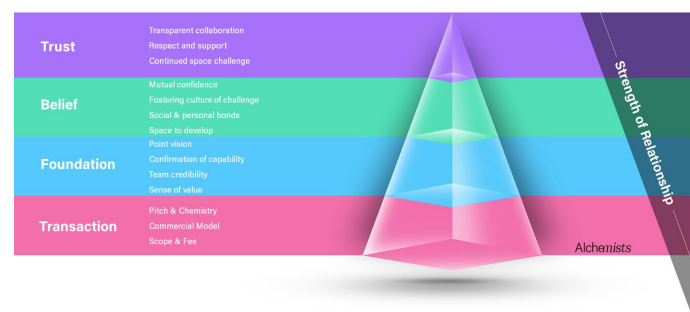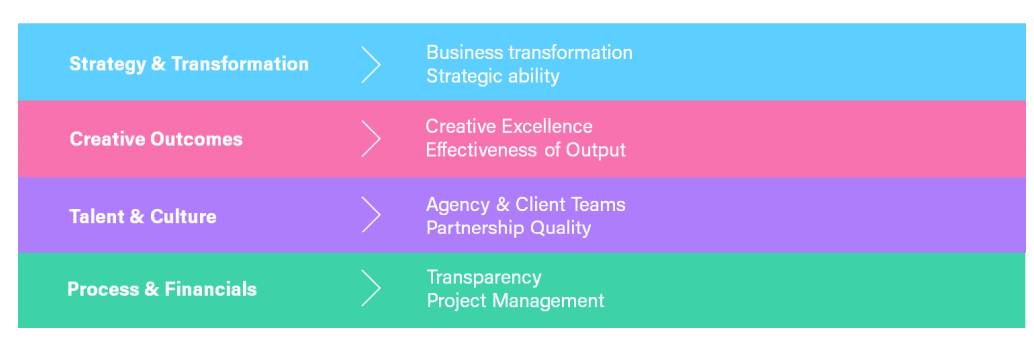The pandemic has put client-agency relationships under tremendous strain as fast-changing circumstances put immense pressures on both parties - here’s how to alleviate them, says Alchemists’ Vlad Komanicky.
Marketers have had to rethink or even tear up carefully worked out strategies and agencies have had to pivot to adapt to new working practices and reassess their commercial arrangements. Contracts and deliverables have had to be renegotiated, new objectives set, and new points of contact established as furlough, redundancy or resignation removed familiar faces on both sides. All this while budgets have been cut and retained commercial arrangements have often been under a review.
It’s been traumatic. But this period will have demonstrated whether client-agency relationships were built on a strong foundation or some reset is needed. I salute those partnerships that have weathered the storm.
I imagine many marketers are still thinking about the support they need to deliver their KPIs for 2021. And how to deliver those through a more productive (in the broadest sense) relationship. It is all based on the fact whether you have full trust in your partner’s capabilities.
Establishing an evaluation framework
Appointing a new agency takes up a lot of resources at a time when clients are working with smaller budgets. The latest Advertising Association/WARC Expenditure Report forecast ad spend will fall by 14.5% in 2020, equating to a loss of £21.5bn compared to 2019.
The better course, therefore, is to determine how to work more efficiently. Ultimately, the goal is to identify where there is a solid foundation that both client and agency can build on. This should not just be a matter of assurances and a handshake. A proper framework for evaluating the state of a relationship, and what elements need to be worked on, is essential.
To help clients and agencies with the above challenges, Alchemists partnered with ISBA to develop such an evaluation framework. At its core is the notion that clients and agencies do not magically get to a place of genuine trust. They need to work through a series of critical stages to reach this all-important phase.
The first of these steps is the initial ‘transactional’ phase during and just after a pitch when contracts are negotiated and signed. The second is the ‘foundation’ phase, where a joint vision is hammered out and capability confirmed. This is followed by a belief’ phase where mutual confidence emerges that goals can be realised. To get the most out of the relationship, however, this must evolve into trust.

To evaluate the client-agency relationship at each of these four phases with consistency and to identify where it needs nurturing, we suggest stress-testing each phase using four building blocks:
- strategy and transformation;
- creative outcomes;
- talent and culture;
- process and financials.
Each of these blocks must be regarded through slightly different lenses depending on which phase of the relationship you are. You can’t expect to deliver transformation if you’re coming off a pitch for example.

Stress-testing ‘trust’
Trust is the pinnacle of any relationship when genuine collaboration occurs between teams and there’s a total belief in each other’s capabilities. This phase is where outcomes can become genuinely game-changing for client and agency – but it’s not a static destination.
Like any relationship that has reached apparent harmony, it can lead to complacency and underperformance if not nurtured. Even though you have reached the coveted “Trust” phase, it’s not self-sustaining. Both parties must continue to work on it and to innovate – and more so in today’s environment.
The power of process
Process and financials are critical areas that require constant innovation, but they are often overlooked. The client should believe the agency is focused on the optimisation of internal processes with the client’s best interest in mind.
Many clients are now assessing whether the standard retainer model really leads to the best way to establish and measure mutual goals and outcomes. Willingness to explore innovation in models has been rekindled over the pandemic period. And this is positive as it keeps the dialogue open and allows the relationship to evolve.
The work in a relationship is never done. Building a successful relationship relies on knowing what the journey looks like and what stage you are currently at – and being realistic rather than idealistic. Both parties need to be willing to learn how to get to the next stage. Retaining a “status quo” is not a winning strategy.
Marketers will have tough targets in 2021. They will need to have a strong partner in their agencies more than ever before. Therefore, they must ensure that their agency relationship reaches and then stays in the trust phase for as long as possible - and this means being proactive and continually ‘refreshing’ the expectations for the relationship with some clear guidelines.

